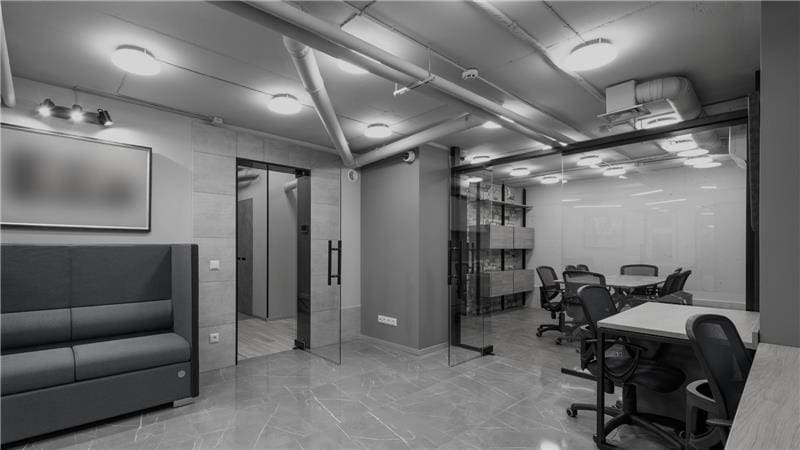Let me guess—you picked your brand colours because they “looked nice.”
Or worse… because your competitor used them and it “felt right.”
Cool.
Now let me tell you what’s not cool:
Your conversions. Your retention. Your trust factor.
If your brand colours suck, I promise you this—your strategy sucks harder. Because no brand with a real strategy throws colours on a wall and hopes one sticks.
I’ve been in the digital marketing arena for 20 years—long enough to see billion-dollar companies rise on colour psychology… and startups collapse because their branding looked like a kindergarten art project.
So let’s get one thing straight:
Your brand colours aren’t decoration. They’re psychological weapons.
Use them right, and you sell more. Use them wrong, and you become background noise.
Your Colours Are Talking—And People Are Listening
You think your audience is reading your about page?
They’re not.
They’re feeling your brand in milliseconds based on your colours.
- Blue = Trust
- Red = Energy
- Black = Luxury
- Green = Balance
- Yellow = Optimism
- Orange = Excitement
- Pink = Empathy
- Purple = Creativity
It’s not woo-woo—it’s biology. Your brain processes colour faster than shape or text.
That means colour is your first impression. Your opener. Your hook.
So if your colours clash, confuse, or feel off—you just killed your chance before the first scroll.

Bad Colours = Bad Signals = Bad Branding
Here’s the part no one wants to admit: If your colours don’t align with your values, tone, and audience, you’re lying visually.
And customers know it. They won’t say it. They’ll just leave.
Let’s say you’re a mental health coach, and your colours are harsh reds and blacks.
Guess what? That screams anxiety and chaos, not peace and trust.
Or you’re a high-ticket consultant and your palette is neon yellow with comic-style fonts.
You might as well wear a clown wig to your next pitch call.
Mismatch = mistrust.
That’s the formula. And you’re not beating it with “but I like these colours.”
Colour Is Strategy, Not Style
Let me say this as clearly as possible:
Your brand colours are not about your taste. They’re about your message.
Every shade should reinforce your positioning:
- Are you premium or accessible?
- Are you playful or professional?
- Are you classic or disruptive?
Your audience isn’t guessing. They’re reading into everything—especially what you don’t say out loud.
The colour combo you choose is your brand’s subconscious voice.
And if that voice sounds confused or off-brand, it means your entire strategy is shaky AF.
Your Brand Colour Audit
(You Need This Yesterday)
Don’t panic. I’ve got a checklist that’ll reveal if your palette is weak sauce or world-class.
- Do your colours align with your mission?
Luxury needs restraint. Wellness needs calm. Tech needs clarity. - Do you use your palette consistently?
If your Instagram is one vibe and your website is another, you’ve already lost trust.
- Can your colours adapt across light/dark, print/web, digital/motion?
If they don’t work in all formats, your brand has no real system. - Do your colours match your customer’s psychology—not just yours?
Because you liking purple means nothing if your audience sees it as confusing.
- Is contrast readable and accessible?
Your text shouldn’t disappear into the background. If it does, your message is literally unreadable.
If you failed 2 or more of these—stop posting content and go fix your branding system.

Colour Trends Are a Trap
Let’s be real: you saw that blush‑pink minimalist aesthetic blowing up on Instagram, and you thought, “We should do that too.”
Congrats. You’ve officially become another template brand no one remembers.
Trends are crack for lazy marketers. They feel good for five minutes…
until your brand disappears into the crowd with every other beige, muted, millennial lookalike.
Want to stand out?
Build your colour strategy on meaning, memory, and differentiation—not popularity.
Examples of Colour Done Right (And Wrong)
- Done Right: Spotify
Green. Black. Neon gradients. The colours say “youth, energy, audio rebellion.” Their branding moves, literally and metaphorically. - Done Right: McDonald’s
Red = appetite. Yellow = happiness. Together? You’re conditioned to crave fries. That’s not design. That’s mind control. - Done Wrong: Rebrands with No Reason
Remember when Tropicana ditched their iconic orange-with-a-straw logo for a sterile white box? Sales dropped 20% overnight.
Why?
Colour familiarity was broken. Consumers felt lost, not excited.
What Strong Brands Understand (That You Don’t Yet)
The best brands in the world bake colour strategy into the business model.
It’s not something they “update” after the logo is done.
- Coca-Cola owns red.
- Tiffany owns that blue.
- Google thrives on primary colour confidence.
- Netflix punches you with black and red drama.
These brands are trusted because they’re recognised.
They’re remembered because they’re consistent.
And they’re profitable because their colour reinforces their message 24/7.
If your colours aren’t pulling that kind of weight, you’ve got a design issue AND a strategic one.

What to Do if Your Brand Colours Suck
- Don’t panic—evaluate. Ask yourself: Do my colours reflect my values, tone, and audience?
- Consult a real branding pro. Not your cousin with Canva. Not your intern. Someone who understands strategy and psychology.
- Rebuild your palette with purpose. Pick a primary colour, two accents, and neutrals. Build in contrast. Test for digital and print.
- Document it. Use it religiously. Your colour palette is a non-negotiable part of your brand guide.
- Update all assets. Website, socials, email templates, ads, slide decks. If one piece is off, it dilutes the whole system.
And no, this isn’t “just design stuff.” This is how you build brand equity, trust, and retention.
Final Word: Looks Matter—Don’t Pretend They Don’t
You can have the best offer, the best funnel, the best customer service in the game…
But if your brand colours suck?
People will never give you the chance to prove it.
Why?
Because colour isn’t the cherry on top of your brand.
It’s the whole damn cone.
It tells the story before you open your mouth.
It either invites people in… or silently pushes them away.
So if you’re still saying things like:
- “We’ll fix the brand colours later”
- “This template came with the logo”
- “It’s just a placeholder for now”
You’re not building a business.
You’re playing dress-up and calling it strategy.
It’s time to own your brand.
Time to choose colours that command attention, build trust, and back up your message like a punch to the chest.
Because the truth is brutal but simple:
If your colours suck, your strategy does too.
Fix it before someone else does it better, faster—and more beautifully—than you.




